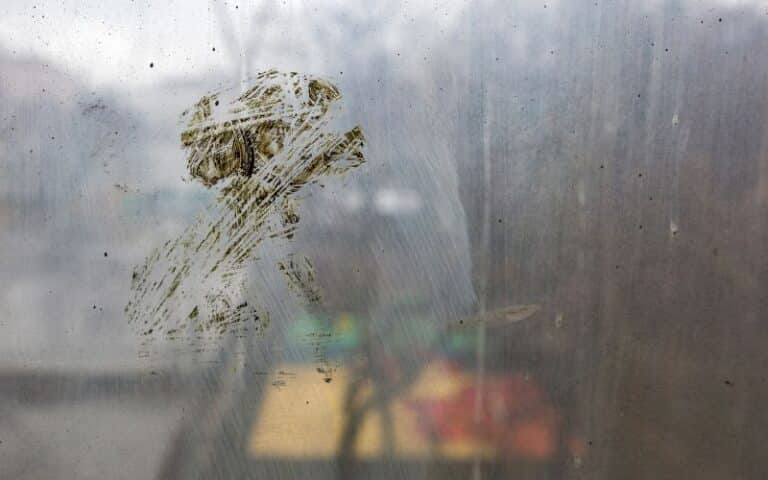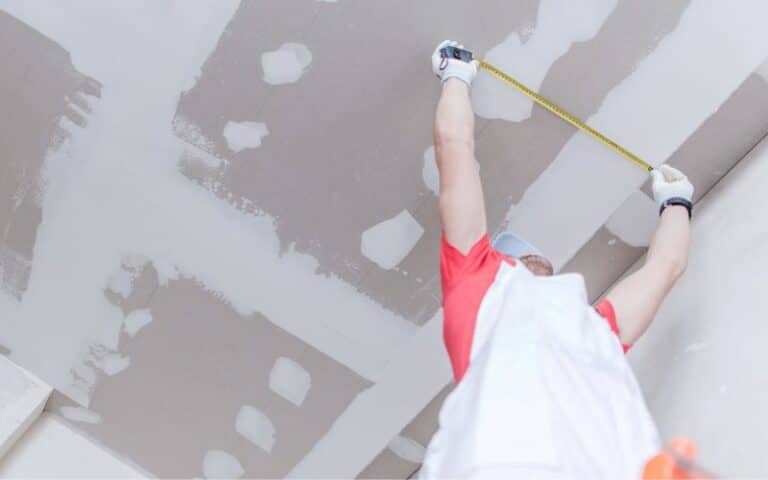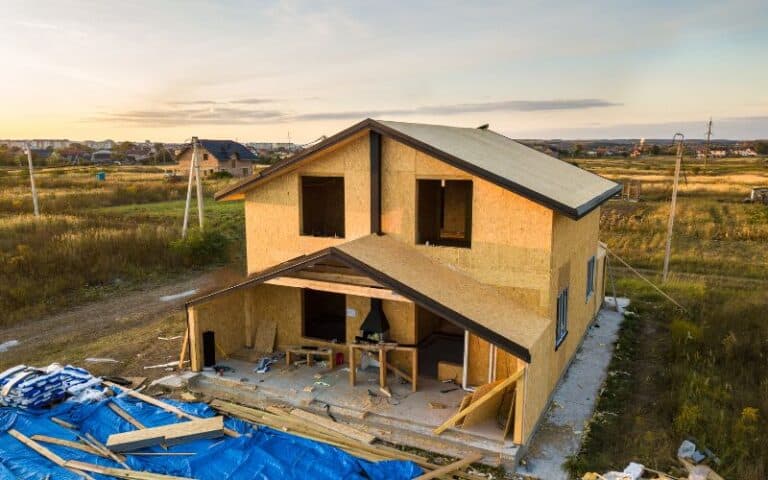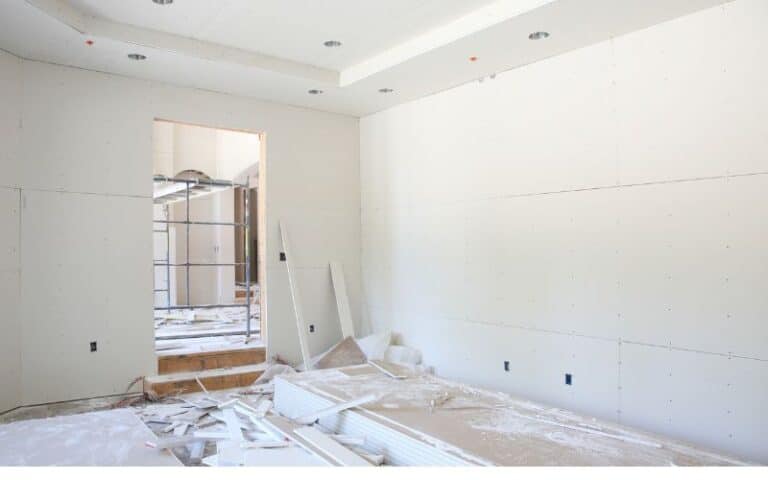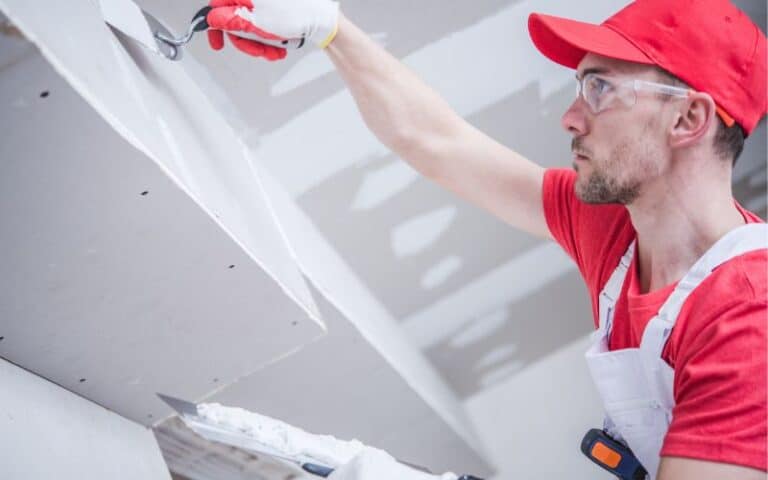Some prefer 5/8 drywall for their walls and ceilings because of its super fire rating. Aside from that, 5/8 drywall is excellent for those seeking soundproof rooms in their homes due to its thickness.
5/8 drywall appears to be the thickest of the standard drywall thickness options, including the 1/4-inch and 1/2-inch.
However, finding the size of the ring that can fit in is necessary and might be problematic despite its great purpose.
5/8 drywall goes best with the 3/4-inch-sized mud rings. 3/4-inch rings are slightly thicker, making them great for the 5/8 drywall. Besides, if the mud ring has the same height as the drywall, you may notice some openings.
In this article, you will learn what size mud ring is best for 5/8 drywall and why it is best. Ultimately, I’ll recommend specific sizes of mud rings for the respective drywall sizes.
Ready for a Drywall Quiz?
What Size Mud Ring is Best For the 5/8 Drywall?
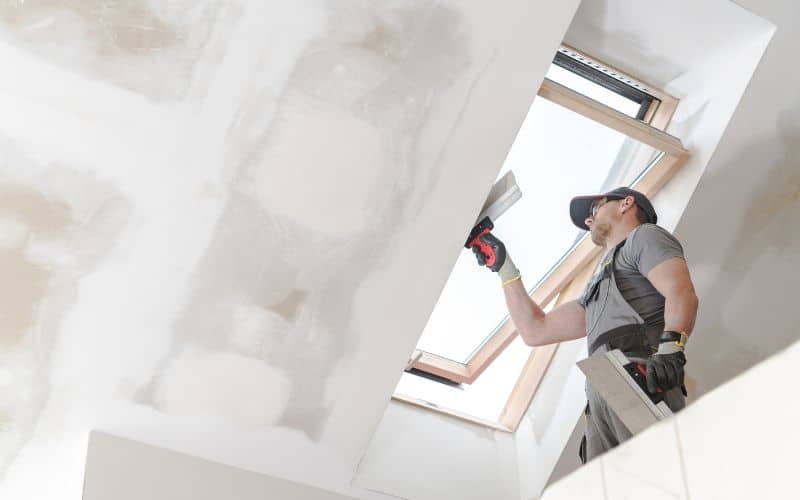
The 3/4-sized mud ring is the best for the 5/8 drywall. Other sizes of mud rings may also be suitable for the 5/8 drywall, but the 3/4 fits best.
Installing 5/8-inch drywall in the building or remodeling process is a significant investment. However, you could ruin the work by installing non-sizeable mud rings.
Usually, the edges of mud rings extend outside the drywall, so it would be unfortunate if they were either undersized or oversized.
Each mud ring size has a corresponding drywall thickness. So, do not multitask mud rings, even though others may be difficult to find.
Installing the perfect mud ring on the mounted electric box saves you the penalty of ruining your drywall.
Therefore, the 3/4-sized mud ring remains the best option for 5/8-inch drywall, even though it is uncommon.
Matching mud rings with drywall depends on the thickness of both materials. The thickness of the mud ring contributes significantly to the process, as does the drywall’s thickness.
I would not recommend using similar sizes of both materials. That is using a 5/8-sized mud ring for 5/8-inch drywall.
If you do that, the mud ring will stay hidden in the wall, and the edges won’t protrude outside the drywall. Not only will the shape be altered, but it won’t be very convenient.
If the mud ring hides inside the drywall instead of protruding outside, mounting your receptacles to the wall could be difficult.
To match mud rings with drywall, the thickness of the mud ring should be inversely proportional to that of the drywall.
Mud rings that are thicker than the drywall will always protrude despite the outline of the drywall. 5/8-inch thick drywall, even though very thick, allows the mud ring to stick out.
The outline of the 3/4 mud ring is larger than the drywalls. Similarly, for 1/2-inch drywall, you should go for 5/8-sized mud rings.
Additionally, only sometimes expect mud rings to fit perfectly, even though it is still achievable.
Does the 3/4 Mud Ring Sit Flush On A 5/8 Drywall?
The 3/4 mud ring fits perfectly with a 5/8 drywall. However, it doesn’t have to sit flush on it unless you put in more effort.
You should install your electrical boxes and mud rings properly, whether renovating or building a new house.
It doesn’t matter whether you have everything you need for the installation; what matters is the techniques.
Of course, you can install it once you learn the proper techniques, which I’m about to hint you on.
First, it’s nice for an electrical box to sit flush on the wall; it should not stay closer to the wall than 6mm.
But it doesn’t apply to mud rings because they must not sit flush on the drywall.
Mud rings have to protrude at least an inch, sitting on the wall and not lying recessed to the wall.
While this may be true, some insist that their mud rings lie flush on the wall.
As I mentioned earlier, you will only do that with effort. You’ll have to do a little task, even though it’s not strenuous.
You’ll have to neatly cut a portion of the drill around the mud size ring.
To do that, you need incredibly sharp blades so you don’t end up with messy drywall or crappy installation.
The idea is to cut neatly such that the outline of the mud ring sits flush on the drywall.
You might want to use the 8/32 screw to achieve that because it holds the mud ring in place.
Other factors help with your mud ring sitting flush on the drywall, but you can’t underrate the function of the 3/8 screw.
Nevertheless, only the edges of the mud rings protrude outside the drywall.
What Size Mud Ring Can You Use on a 3/4 Drywall?
Due to its inadequacy, there’s no telling which mud ring size is best for a 3/4 drywall. The 3/4 drywall is not standard because it is in short supply.
Installing 3/4 drywall onto the wall or ceiling is uncommon because of its less thick quality. Chances are the 3/4 drywall will not last long and may instead have lots of side effects.
That said, you can use 3/4 drywall in other areas. Just as the 3/8 drywall is best for renovating partitions of the existing drywall, the 3/4 drywall is also best for fixing patches.
Therefore, you shouldn’t depend on the thickness of the 3/4-inch drywall to install mud rings.
Consider, instead, the thickness of the existing drywall, which in most cases is 5/8 drywall.
Drywall Sizes And Recommended Mud Ring Sizes
Enhancing job productivity with handy drywall mud rings the halfway mud ring sizes.
Additionally, providing matching or fitting sizes of both materials is halfway into having twice the job. Hence all you need are the essential tools for the installation: a saw and a screwdriver.
The drywall sizes should differ from the mud ring to avoid mud ring recession. Instead, the sizes should vary inversely and proportionally.
If the size of the drywall increases, the mud ring size decreases, and vice versa.
For instance, if the existing drywall were 5/8, you would go with the 3/4 mud ring. Similarly, if it were a 1/2 drywall, you would use thicker 5/8-sized mud rings
The table below lists drywall sizes and the recommended mud ring sizes.
| Drywall Size | Mud Ring Size |
|---|---|
| 1/4 | 5/8 |
| 1/2 | 5/8 |
| 3/8 | It depends on the size of the existing drywall |
| 5/8 | 3/4 |
Are Mud Rings Mandatory For Drywall?
Mud rings are mandatory for metal boxes, especially in commercial buildings. They use mud rings to cover the metal boxes before mounting the drywall.
During the construction or renovation of buildings, mud rings are helpful, especially when there’s yet to be a drywall to mount receptacles.
Also, mud rings are very supportive at many job sites as they help secure electrical devices.
Mud rings may be mandatory, especially at commercial houses for metal boxes; however, plastic boxes at residential homes are not.
Now, choosing which mud ring is best for your drywall is what you should refrain from toiling with because of the effect of your choice, drywall. The poorer the option, the poorer the work.
Mud rings will help control the deaths due to electric shock from electrical devices.
FAQs
Which Drywall Thickness Is the Best For My Wall?
The thickest standard drywall thickness is the best for your wall. 5/8-inch is your best bet when it comes to soundproofing in noisy houses.
You can also refer to the 15.9mm (5/8-inch) thick drywall as firewall drywall due to titer retarding ability. It is also the most expensive drywall thickness but worth the price.
How Much Do Mud Rings Cost?
Mud rings vary in size and thickness, and so are also different in price. For instance, 5/8 sized mud ring ranges from $9 to $87 depending on the brand and gang device.
While this may be true, the price of ¾ sized mud rings ranges from $9 to $65, and so on. They mostly come in packs, making them worth the money.

